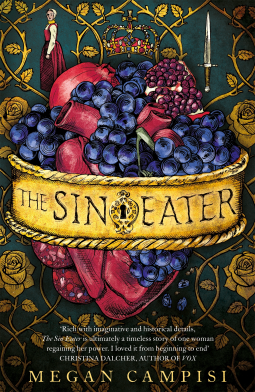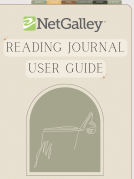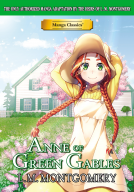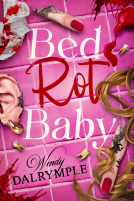
The Sin Eater
by Megan Campisi
This title was previously available on NetGalley and is now archived.
Send NetGalley books directly to your Kindle or Kindle app
1
To read on a Kindle or Kindle app, please add kindle@netgalley.com as an approved email address to receive files in your Amazon account. Click here for step-by-step instructions.
2
Also find your Kindle email address within your Amazon account, and enter it here.
Pub Date Mar 31 2020 | Archive Date Apr 05 2020
Pan Macmillan Australia | Mantle
Talking about this book? Use #TheSinEater #NetGalley. More hashtag tips!
Description
A Sin Eater's duty is a necessary evil: she hears the final private confessions of the dying, eats their sins as a funeral rite, and so guarantees their souls access to heaven. It is always women who eat sins - since it was Eve who first ate the Forbidden Fruit - and every town has at least one, not that they are publicly acknowledged. Stained by the sins they are obliged to consume, the Sin Eater is shunned and silenced, doomed to live in exile at the edge of town.
Recently orphaned May Owens is just fourteen, and has never considered what it might be like to be so ostracized; she's more concerned with where her next meal is coming from. When she's arrested for stealing a loaf of bread, however, and subsequently sentenced to become a Sin Eater, finding food is suddenly the last of her worries.
It's a devastating sentence, but May's new invisibility opens new doors. And when first one then two of the Queen's courtiers suddenly grow ill, May hears their deathbed confessions - and begins to investigate a terrible rumour that is only whispered of amid palace corridors.
Marketing Plan
An old adage says there are really only two stories: a man goes on a voyage, and a stranger arrives in town. This is the third: a woman breaks the rules ...
An old adage says there are really only two stories: a man goes on a voyage, and a stranger arrives in town. This is the third: a woman breaks the rules ...
Available Editions
| EDITION | Paperback |
| ISBN | 9781529019100 |
| PRICE | A$29.99 (AUD) |
Links
Average rating from 12 members
Featured Reviews
I only recently found out about the concept of sin eaters in another book that I read recently which travelled the gamut of the seven deadly sins and how they are attached to food. The protagonist of this novel, a young girl named May, finds herself condemned to a life of devouring the sins of the dying, and soon finds herself caught up in a plot laden with treason, lies, murder, and, of course, iniquities of the soul.
While my review copy was a little glitchy in places, I stuck it out because I just loved this book so darn much. The atmosphere was dark and haunting, the characters rich and varied, and the way that the topics were handled was elegant as well as uneasy. The whole world leaves you with a thin layer of filth that you can almost feel on your body as you see every rejection and slight that May and her counterparts face, as well as the way that those in power abuse their position. While some may find the eating of the sins a little dull at points, I loved it. Seeing the way that people confessed their darkest moments to a complete stranger in a desperate attempt to save their souls left me unsettled.
I could not stop reading this book. I'd try to take a break and inevitably come crawling back, desperate to know what happened to May next. I don't feel like this is the feminist text that some of the blurbs purport it to be, but that's not necessarily a downside. Not everything has to be 'The Handmaid's Tale', and honestly, as a piece of new and exciting historical fiction/fantasy, this has more merits in its own right. A book like this can easily stand on its own.
‘Salt for pride. Mustard seed for lies. Barley for curses.’
May Owens, aged fourteen, becomes a sin eater after being found guilty of stealing a loaf of bread. May might not appreciate how such a role will ostracise her, but she’s grateful that she no longer needs to worry about where her next meal might come from. The novel is set in a slightly alternate version of sixteenth century England.
‘The Unseen is now seen,’ says the Sin Eater. ‘The Unheard is now heard.’ The sins of your flesh become the sins of mine to be borne to my grave in silence. Speak.’
A sin eater, I read, is always a woman. After all, it was Eve who first ate the Forbidden Fruit. At this time, in this world (and in parts of the ‘real’ Christian world) every town had at least one sin eater. It was her duty to hear the final confessions of the dying and to eat their sins thus guaranteeing their souls access to heaven. While the sin eater was necessary, she was shunned and silenced. The sin eater was largely invisible.
At first May works with another sin eater. May learns that foods are matched to crimes and is puzzled when a deer’s heart becomes part of an eating for one of the Queen’s courtiers. The relevant associated crime was not part of the confession. May is curious. A second courtier becomes ill and dies. A second deer’s heart appears. May investigates.
What follows is an intriguing quest for truth. May’s world has already been turned upside down once, and her investigation will not be easy.
I found this novel intriguing. While I worked out part of the mystery before the end, there were aspects I hadn’t figured out and the journey was interesting.
Note: My thanks to NetGalley and Pan Macmillan Australia for providing me with a free electronic copy of this book for review purposes.
Jennifer Cameron-Smith
 Juli M, Reviewer
Juli M, Reviewer
Absolutely LOVED this book! I had rendering issues with my Kindle app and I still read 45% and thoroughly enjoyed it despite having to decode the story from the coding issues so that gives you an indication of how invested I was in this book! After finally caving and getting a different app to read on I finished the book in record time and was enamoured.
The Sin Eater is a dark, dystopian delight that keeps you captivated cover to cover.
The plot is definitely a mix of handmaids tale and Alice in wonderland and is a brilliant balance of whimsy and historical fiction realism. The whole concept behind sin eating is intriguing and something I'd actually like to study further thanks to this book.
The characters are not your usual cast and are wonderfully unique and a joy to read about. There are also a few plot twists in there to keep you and the characters on their toes.
Overall, this book would likely appeal to fans of dystopian fiction, historical fiction, food/eating themes, religious/political musings (so a pretty wide audience). I'm not generally a historical fiction fan but adored this so definitely give it a try!
Review will be posted on social media channels closer to release date but is live on GoodReads.
 Carolyn S, Reviewer
Carolyn S, Reviewer
"The Unseen is now seen. The Unheard is now heard. The sins of your flesh become the sins of mine to be borne to my grave in silence. Speak."
So speaks the Sin Eater when she attends the bedside of a dying person to hear them confess their sins. By eating specific foods attributed to different sins (eg. raisins for adultery, dried plum for incest, mustard seeds for lying) the Sin Eater absorbs the sins herself and absolves the dying.
When fourteen year old May Owens is caught stealing bread she is sentenced to become a sin eater and sent to live with an older sin eater to learn her role. She is still learning which foods must be be prepared for the different sins when the Sin Eaters are summoned to the castle to attend one of the Queen's courtiers. After the woman dies and they return to eat the food for each of the woman's sins they are surprised to see an extra food item on the table next to the coffin - a dear's heart. May doesn't know what sin this represents but her teacher does and refuses to eat it. When the older woman is later thrown into the dungeons and tortured to death, May is left alone to be the Sin Eater for the village and uncover a strange plot at the castle.
This was an interesting novel with such an unusual character as the main figure. Sin Eaters did exist in 18th and 19th century Europe but generally the role was a simpler one with the eating of bread or a special funeral cake symbolising the removal of the deceased's sins. In this novel, set in the 16th century in alternative version of the court of Queen Elizabeth I (virgin queen Bethany and her sister Maris), the idea has been extended into a more exotic range of foods representing specific sins. May is branded as a Sin Eater with a heavy brass collar round her neck and the letter S branded on her tongue. She is reviled by all and not allowed to speak except when asking the dying to list their sins and pronouncing the food required.
The author has created a darkly atmospheric historical period peopled by actors, lepers, Jewish musicians and the members of the Royal court, making an excellent backdrop to the mystery at the heart of the novel. May's deprivation and treatment was heartbreaking, especially that she could no longer touch or speak to anyone making her so alone. For me the book fell a little flat in the middle but picked up pace towards the end as the mystery unfolded. I enjoyed May's way of naming people by what she saw (since she couldn't ask their names) and her inventive way of solving problems. However, I did find the repetitive recitation of her traumatic capture and incarceration that led to her becoming a Sin Eater throughout the book very annoying.
 Reviewer 77764
Reviewer 77764
Thank you for approving me fore The Sin Eater. I really enjoyed it. My review has been posted on Instagram and Goodreads, and will also be posted on the Happy Indulgence book blog in a couple of weeks time.
THE GOOD THINGS
• Beautiful writing. I can’t put into words exactly why I loved it so much, but the style was the type that just leaves you in awe? Last book I remember giving me this vibe was The Sacred Lies of Minnow Bly.
• It’s a standalone medieval England murder mystery/ treason plot! Lots of political scheming, secrets, and betrayals.
• Fascinated by the role of sin eaters. I’d never head of them before, and the way May was perceived by society made for a really interesting murder investigation (the confessed their sins to her, but otherwise she was outright ignored)
THE NOT-SO-GOOD THINGS
• This is not an edge-of-your-seat-suspense filled mystery. It’s slow, but suits the nature of the story.
• It’s a standalone. I always want more. And this is such an interesting concept, it would be cool to read more about May uncovering mysteries as she hears people’s sins
IN SUMMARY
Beautifully written, it’s a decent slow paced murder/treason mystery. I’d never heard of sin eaters in history before this book, and it was a really interesting role.
RATING: 3.5/5 stars
 Ana M, Reviewer
Ana M, Reviewer
I received an e-ARC from the publisher/author via NetGalley in exchange for an honest review. That being said, my e-ARC was impossible to read, so I purchased a copy on my Kindle when it was released.
CW: Violence, sexual assault, murder, graphic medical depictions, bullying, torture
My Thoughts
As stated above, my e-ARC from NetGalley was impossible to read. However, what little I was able to get through convinced me that this was a book I was willing to purchase in order to finish reading it, and I’m glad I did. Personally, I couldn’t see any parallels between Alice in Wonderland or The Handmaid’s Tale touted in the synopsis of the book, but it stood on its own despite these bizarre comparisons.
May, the main character, is also the narrator of the story. I found her to be very straightforward, and I thought the story was well paced. Sometimes, however, I could barely believe she managed to live through most of the scrapes she got herself into, but I suppose you can’t kill your narrator. The author set her up in the beginning as a very inquisitive child, who was always paying attention to little details. I was worried because she seemed to have no filter, and was constantly telling her parents and neighbours her ‘noticings,’ which were both mundane and irritating. I say this with the requisite guilt – I was almost relieved when she wasn’t able to speak anymore. This quality of May’s, the ability to notice random facts, also allowed her to be the perfect person to solve the mysteries within the court, and others outside of it.
There were also some interesting side characters, including the nameless former sin eater, and Brida, a woman with severe leprosy. I particularly liked Brida because she was such a kind soul and particularly understanding of May’s difficulties because she has also suffered prejudice and hatred for reasons that were outside of her control. It was awful to read about her physical deformities, but I thought the representation was both important, and deftly done.
The most fascinating part of the book was the institution of sin eaters. Sin eaters are always women, and are said to be handmaids of Eve. They are branded and are shunned by a society that also relies on them to serve an important spiritual function. They aren’t allowed to speak in public or private, unless they are hearing the confessions of the dying. The backdrop was an alternative Elizabethan England, where people speak Anglish and Catholics are called Eucharistans, so the setting was familiar, but had some subtle twists.
This wasn’t super character driven, or plot driven, and managed to stay in the middle of the road, so I was always engaged. I found the mystery to be intriguing. I didn’t guess much of anything, but that could have been the migraine I had while reading it. I still enjoyed trying to figure out all the clues though.
I found the ending to be satisfying, if a bit brief. I’m not sure how believable it is, but the world is in a place at the moment where we all need a little bit of hope.
First off, let me gush over this cover. When I saw this on Netgalley, I had to have it. The UK/Australian cover is colourful and vibrant; honestly its absolutely gorgeous. I had a massive case of grabby hands for it, so I was super excited when it got approved. Alas, once I opened the file, it was near unreadable with repeating phrases and portions missing – after submitting a report, I had to put it aside until I could get a proper copy on release and then I kind of forgot about needing to review it until recently.
So, The Sin Eater is the tale of a young woman (May is 14) who has lost her father and turned to the street to survive. Putting to use the skills she learnt from her mothers kin, she finds herself stealing a loaf of bread in order to fill the void in her stomach and finds herself in trouble with the law. After a short stint in prison, she finds herself the towns latest Sin Eater and shunned from polite society. But this shunning may just give her a way to investigate the wrongs she beholds in her travels around the town.
Having a minimal knowledge of British history relating to sin eaters and various other religious customs, I found the overview/author note at the beginning to be very helpful. It also made me intrigued about British history so over the past 6 months I’ve some sneaky research and I am so very glad I did. That research made the tale of May make so much more sense than I feel it would have had I still had no idea of the happenings of years gone by. A note for those who are unfamiliar with English reminiscent of the 1500’s, you may need a dictionary if you want all the language to make sense; if you cant be bothered to work it, there may be some places where you get confused Winona face but otherwise you should be good.
While the main character May was fairly well rounded, headstrong, and determined to make things right, I found myself more drawn to the secondary characters. Although the majority are never given names other than descriptions of their appearance, I really enjoyed Mush Face, Black Fingers and Fair Hair as characters. Fleshed out and full realised, these people didn’t fall into the background as many ‘less important’ characters often do.
I will mention here that while the narrative has amazing premise, it was a little bit of a slog to get through. Coming at just under 300 pages, this should have taken me 3 maybe 4 hours tops. Instead it took 7. I found myself becoming easily distracted by other things such as changing the song on a playlist I love & made specifically to listen to while I read or watching my husband play the PS4 even though I started in a separate room. I don’t know whether I was in the wrong mindset to read this one after so long and so much hype. Maybe I would have gotten distracted if it were a completely different novel; we shall never know.
Overall, it was a fairly good read but was very slow paced. I found it a little hard to understand a lot of what was happening because of the use of Olde English – the research I had done since initially picking this one up helped me to understand exactly what the purpose of the sin eater was in society of yesteryear. While most would be drawn to the main character and her plight in the world, I was instead more intrigued by the secondary characters as they seemed to have more personality than simply feeling sorry for themselves for the majority of the novel. Also, that ending happened super quickly and I feel like something more should have happened.
Readers who liked this book also liked:
L.M Montgomery
Children's Fiction, Comics, Graphic Novels, Manga, Teens & YA
Marie Bostwick
Historical Fiction, Literary Fiction, Women's Fiction
Vicky Osterweil
Business, Leadership, Finance, Nonfiction (Adult), Politics & Current Affairs


















